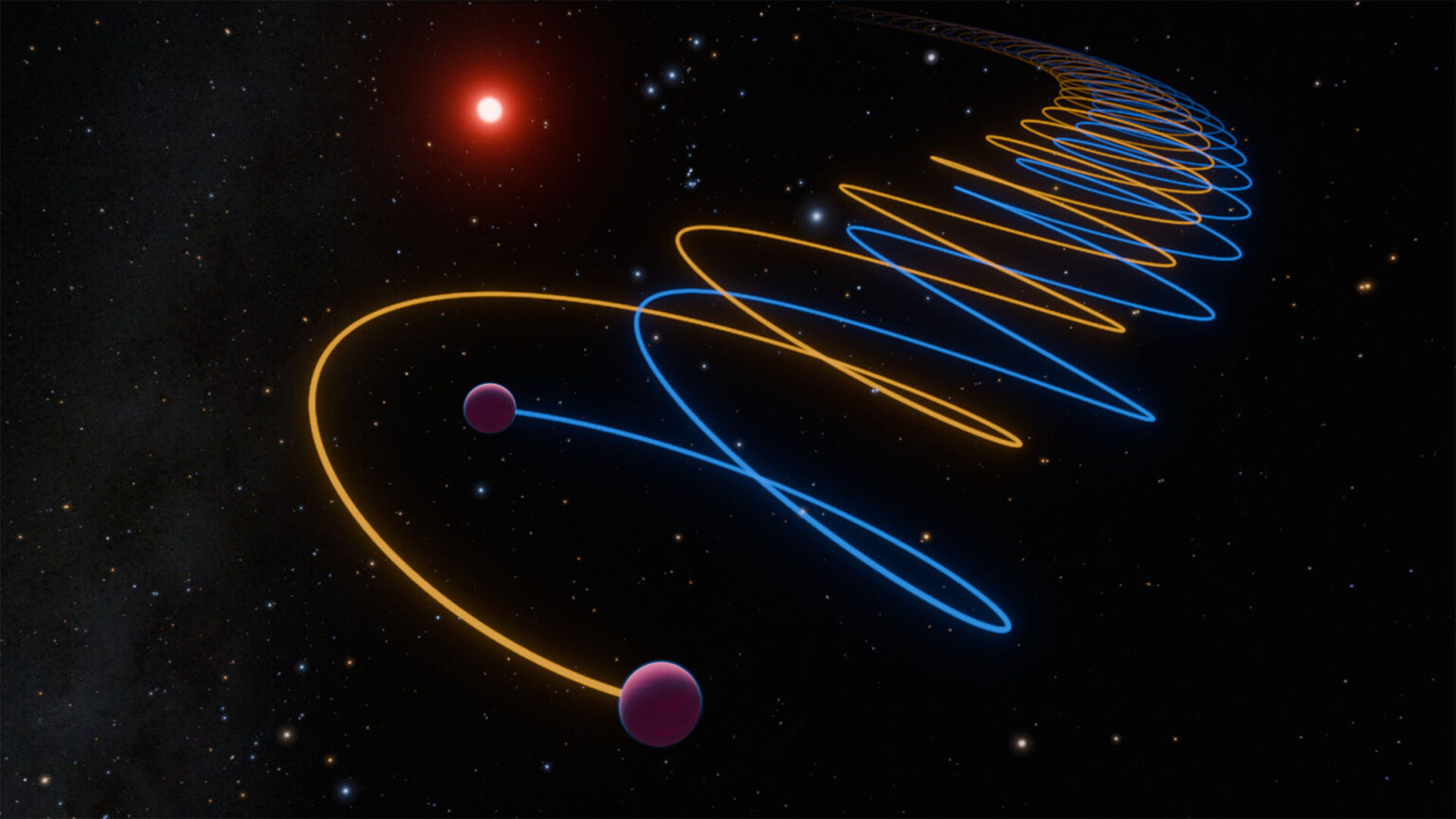A long-standing astronomical mystery about the first-ever discovered brown dwarf has finally been solved by scientists.
The brown dwarf, named Gliese 229B, was discovered in 1995 but has puzzled astronomers ever since, as it appears to be too dim for its heavy mass. Now, according to two new papers in the journals Nature and The Astrophysical Journal Letters, this discrepancy between Gliese 229B’s brightness and mass may be because it’s actually a binary star system, consisting of two brown dwarves.
Brown dwarfs are astronomical objects that are often referred to as “failed stars” because they fall in size and mass between gas giant planets like Jupiter and the smallest stars. They have masses between about 13 and 80 times that of Jupiter and are not massive enough to sustain the nuclear fusion of hydrogen into helium at their cores, which is the process that powers true stars like our sun.
Gliese 229B was the very first brown dwarf astronomers discovered, and in subsequent years they have discovered thousands of these strange celestial bodies. Gliese 229B orbits around a red dwarf star, Gliese 229, both of which are situated about 18 light-years from Earth.
“Seeing the first object smaller than a star orbiting another sun was exhilarating,” said study co-author Rebecca Oppenheimer, an astrophysicist at the American Museum of Natural History who was involved in the 1995 discovery, in a statement. “It started a cottage industry of people seeking oddballs like it back then, but it remained an enigma for decades.”
However, as scientists learned more about brown dwarves, they realized that Gliese 229B was odd, as it had a mass about 70 times that of Jupiter but didn’t shine as brightly as an object of that mass would be expected to.
Now, according to the new papers, Gliese 229B may be two brown dwarves tightly orbiting each other, with a respective mass of about 34 and 38 times that of Jupiter. These two objects are thought to orbit each other very quickly: once every 12 days.
“Gliese 229B was considered the poster-child brown dwarf,” Nature paper co-author Jerry Xuan, a graduate student at the California Institute of Technology, said in the statement. “And now we know we were wrong all along about the nature of the object. It’s not one but two. We just weren’t able to probe separations this close until now.”
Two smaller objects rather than a larger one would explain the observed dimness of Gliese 229B. The closeness of the orbit also explains why astronomers have taken so long to spot the pair, as it’s very hard to distinguish them from so far away. These two separate objects were newly christened Gliese 229Ba and Gliese 229Bb.
“These two worlds whipping around each other are actually smaller in radius than Jupiter. They’d look quite strange in our night sky if we had something like them in our own solar system,” Oppenheimer said. “This is the most exciting and fascinating discovery in substellar astrophysics in decades.”
The astronomers hope that this discovery will help them further understand how brown dwarves form and evolve and enter into strange binary relationships like this one.
“This discovery that Gliese 229B is binary not only resolves the recent tension observed between its mass and luminosity but also significantly deepens our understanding of brown dwarfs, which straddle the line between stars and giant planets,” said study co-author Dimitri Mawet, a Caltech astronomy professor and senior research scientist at the Jet Propulsion Laboratory, in the statement.
The researchers plan to further scour the cosmos for more brown dwarf binary pairs and hope that this discovery means there are plenty more out there, waiting to be found.
“The fact that the first known brown dwarf companion is a binary bodes well for ongoing efforts to find more,” Xuan said.
Do you have a tip on a science story that Newsweek should be covering? Do you have a question about brown dwarves? Let us know via science@newsweek.com.
Reference
Xuan, J.W., Mérand, A., Thompson, W., Zhang, Y., Lacour, S., Blakely, D., Mawet, D., Oppenheimer, R., Kammerer, J., Batygin, K., Sanghi, A., Wang, J., Ruffio, J., Liu, M.C., Knutson, H., Brandner, W., Burgasser, A., Rickman, E., Bowens-Rubin, R., Woillez, J. (2024). The cool brown dwarf Gliese 229 B is a close binary. Nature. https://doi.org/10.1038/s41586-024-08064-x
Oppenheimer, B.R., Kulkarni, S.R., Matthews, K., & Nakajima, T. (1995). Infrared Spectrum of the Cool Brown Dwarf Gl 229B. Science, 270(5241), 1478–1479. https://doi.org/10.1126/science.270.5241.1478
Whitebook, S., Brandt, T.D., Brandt, G.M., & Martin, E.C. (2024). Discovery of the Binarity of Gliese 229B, and Constraints on the System’s Properties. The Astrophysical Journal Letters, 974(2). https://doi.org/10.3847/2041-8213/ad7714
Read the full article here

